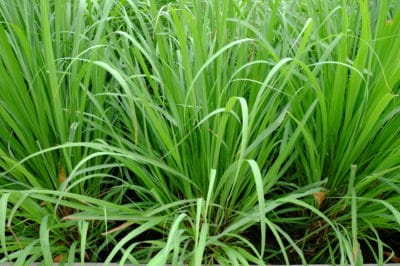How To Plant Lemongrass
Lemongrass loves the heat, plant it somewhere with full sun exposure. If you live in an area cooler than USDA zone 9, lemongrass will need to be overwintered indoors. Plant it only in containers that can come in during the cold, or dig up your plants at the end of the season and store them until spring.
Planting Checklist for Lemongrass:
- Full Sun Location
- Well-Draining Soil
- Nutrient Rich Soil
- Container in Freezing Climates
Many gardeners will have starts to plant. In fact, it’s easy to grow your own start from lemongrass bought at the grocery store or your local plant nursery. If this is the case, space your plants 12 inches apart. If putting them in containers, they may be packed a little closer together to get a full look.
If starting the herb from seed, plant them 1/4 inch deep in rich potting soil. They will germinate in 7-10 days if kept between 70°F (21°C) and 90°F (32°C). They can be transplanted once they are six inches tall.
Keep the soil moist at all times, lemongrass will quickly brown if allowed to dry out. Clip out browning or damaged leaves to encourage healthy growth. Add a 1-inch layer of compost or apply fish emulsion about once a month during the growing season.
Propagating and Overwintering Lemongrass
In any climate, lemongrass should be dug up once a year to separate new bunches. Climates with winters that get freezing temperatures will need to bring their plants indoors through the winter. It’s easy to combine these tasks and propagate new plants while you bring them in for protection.
How to propagate new bunches:
- Step One: Trim all leaves to a height of 2 inches
- Step Two: Dig up rootball
- Step Three: Divide rootball into sections. Make sure each division has at least 1-inch long roots attached. The sections want to come apart, it is an intuitive task
- Step Four: Place each division into it’s own container, or space them 1-3 feet apart
When overwintering, simply place these divisions into pots and put the pots somewhere indoors. The plant will remain alive but mostly dormant until receiving increased sunlight in the spring.
Another option for propagation and winter protection is taking cuttings. Cuttings can be taken from green stalks or store-bought stalks and rooted to produce new plants.
